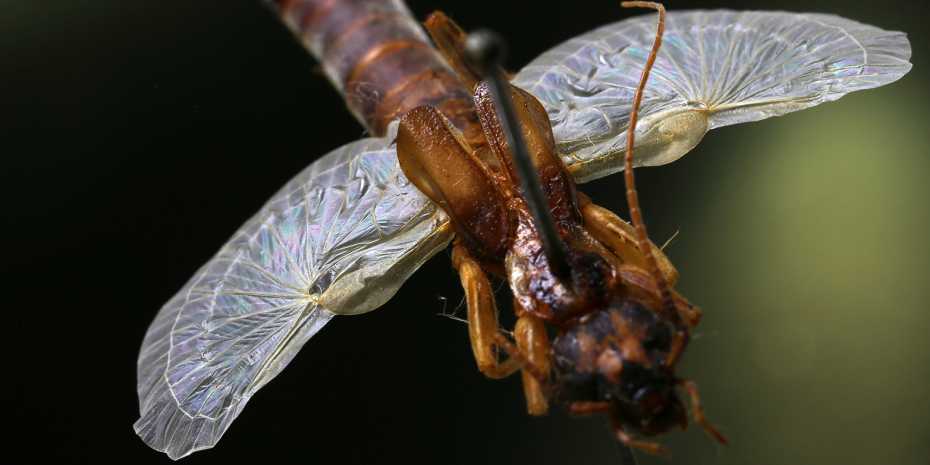What do earwigs, the ancient art of origami, and space satellites have in common? Not much at first sight, but if you’re a researcher at ETH Zurich, it all fits together.

The 3-D-printed imitation of the earwig wing can be folded as compact as its natural counterpart. However, the automatic folding function so far only works in the simplified prototypes. Image credits: ETH Zurich.
Earwigs get a lot of bad rep, but their pincers are actually harmless to humans, and they can’t pass any known diseases to humans and animals. They’re actually quite interesting creatures: their wing expands ten times larger than when closed — one of the highest folding ratios in the natural world, and far better than any structure mankind has developed. This allows the insect to easily fly, but also burrow into the ground without damaging its wings. Earwigs boast another remarkable feature: when open, the wings enter a locked state which allows them to remain stiff without any muscle effort. With a single click, the earwig’s wings become effortlessly stiff.
Researchers wanted to analyze and emulate this performance. Jakob Faber from the research group led by André Studart, Professor of Complex Materials at ETH Zurich, in collaboration with Prof. Andres Arrieta of Purdue University, developed a computer simulation of the wing’s function. They compared it to a conventional origami design (the ancient Japanese art of paper folding) and found that if it employed an origami design with rigid, straight folds, for its wing, the earwig would only be able to expand its wing three times — a much lower performance.
The main difference stems from the elastic folds, which can operate either as an extensional or rotational spring. Also, the insect’s open wing is very stable, but it folds together at the slightest of touch.
The researchers then took the results from the computer model and implemented them in a multi-material 3D printer. In other words, they manufactured earwig-like wings. The spring functions of the connecting folds were programmed into the material with promising results. Researchers were able to develop a spring origami gripper that self-folds, locks and is then able to grip objects without the need for external power.
Despite this seeming like a very theoretical study, it could actually have significant implications for foldable electronics, as well as solar sails for satellites or space probes, which would be light and compact, saving space, weight, and energy. For outdoor enthusiasts, it could also lead to the development of a new generation of ultra-light and compact tents.
“Once you’ve unfolded these things, it’s often impossible to fold them back to their original shape. If, on the other hand, they simply refolded automatically, this would save a lot of hassle,” says Faber, with a playful look.
Journal Reference: Jakob A. Faber, Andres F. Arrieta, André R. Studart. Bioinspired spring origami. DOI: 10.1126/science.aap7753










